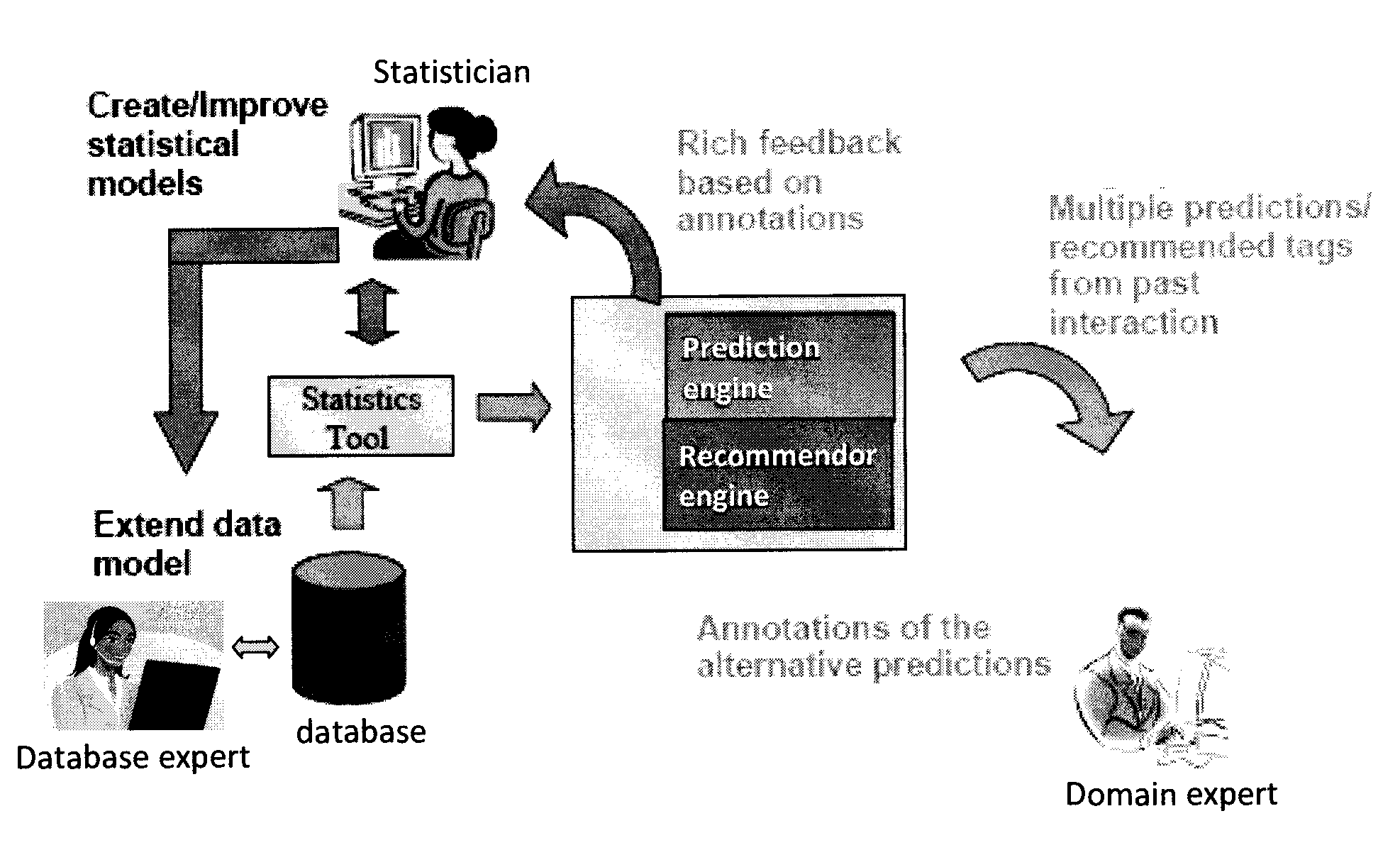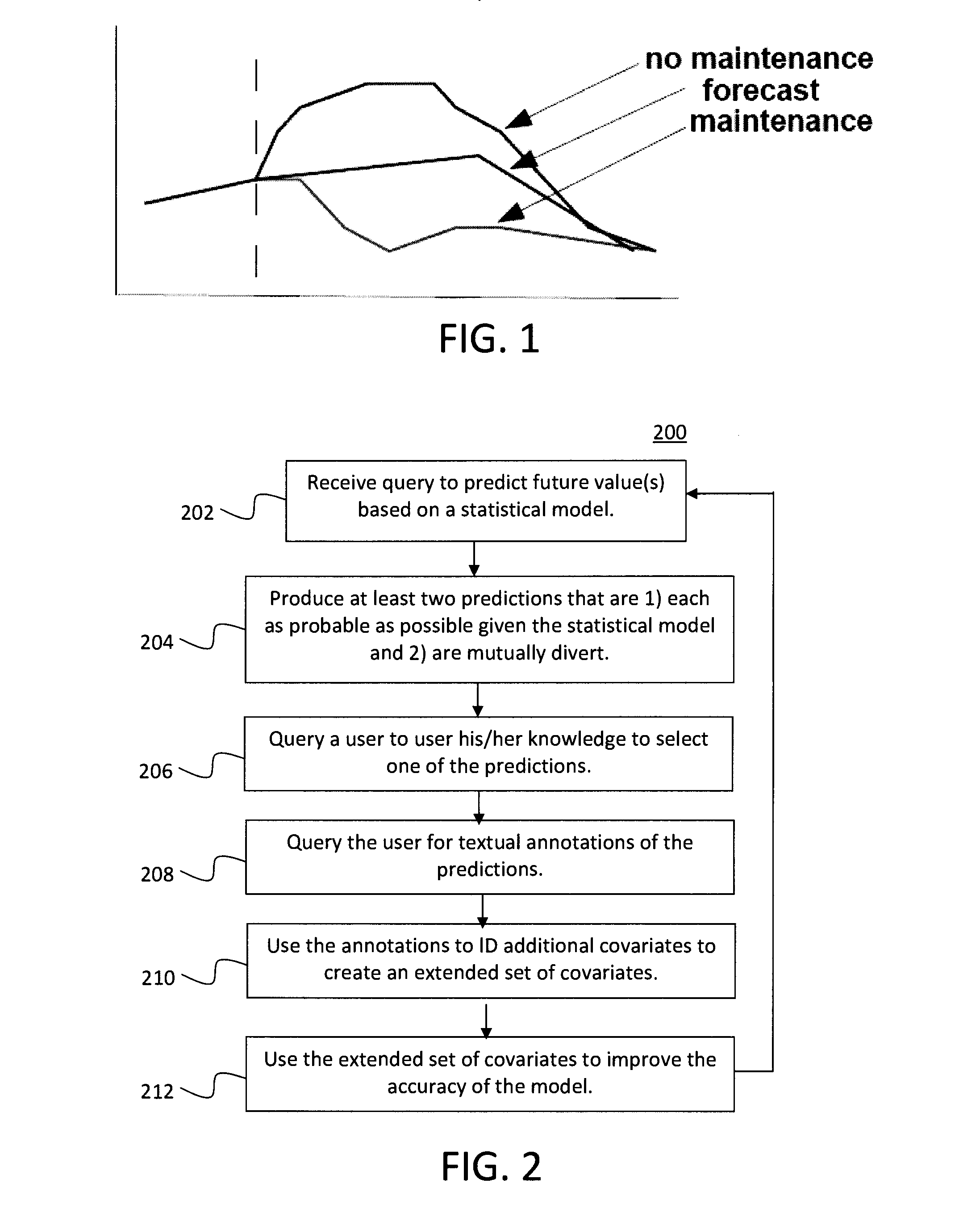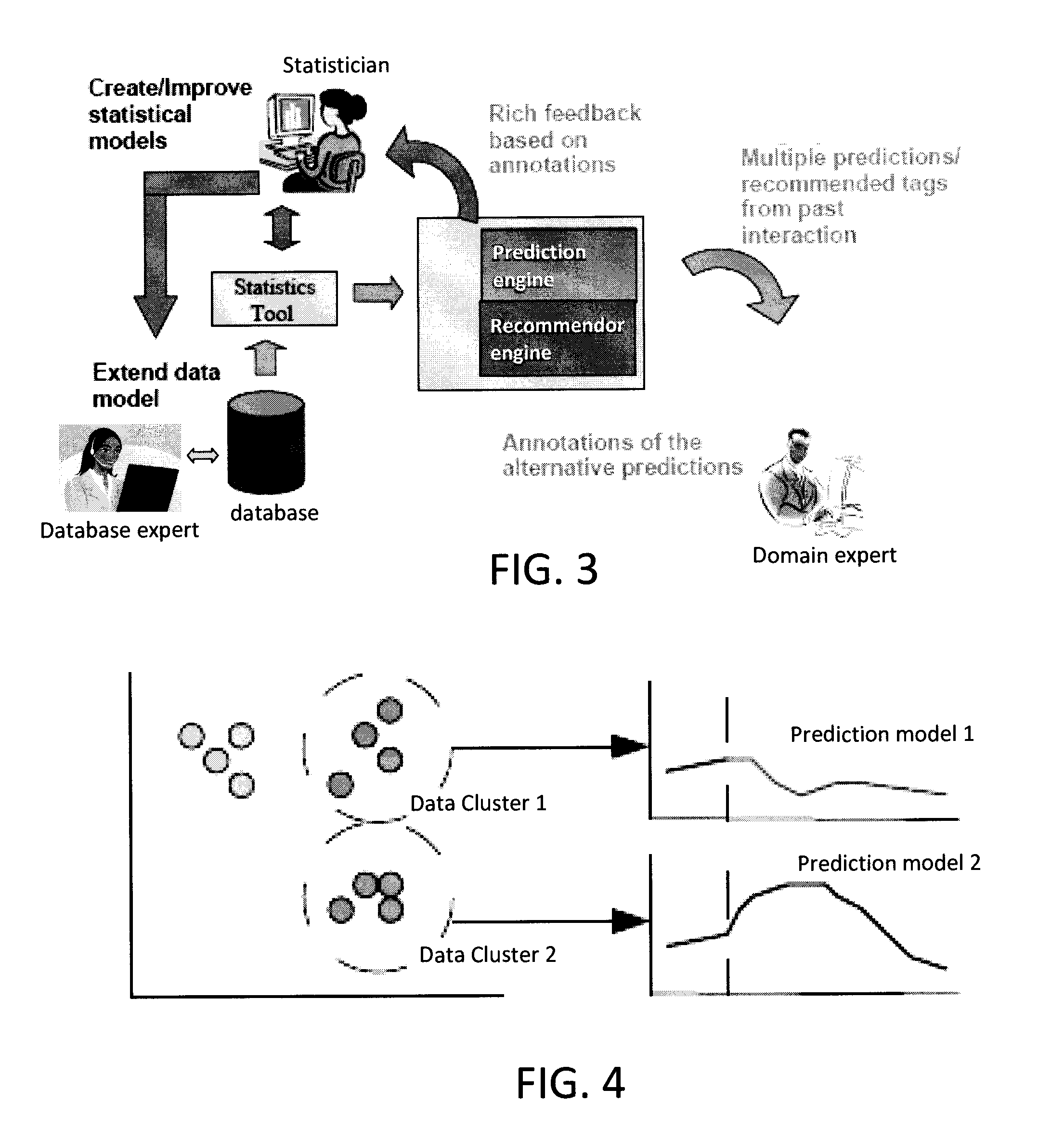Iterative Active Feature Extraction
a technology of active feature extraction and feature extraction, applied in the field of data analysis and mining, can solve the problems of high low water consumption in the building, and inability to map the complete domain knowledge, and achieve the effect of improving the accuracy of the statistical model
- Summary
- Abstract
- Description
- Claims
- Application Information
AI Technical Summary
Benefits of technology
Problems solved by technology
Method used
Image
Examples
Embodiment Construction
[0015]The following are definitions of some terms used in the description:
Training data—data on which the model is trained. Training data consists of a set of data points.
Training data point—data point used for training. A training data point is represented in terms of several covariates (features, e.g., temperature) that are used to forecast a future value (e.g., energy consumption in 24 h).
New data point—data for which a prediction is required. Here it is assumed that a new data point is expressed with the same covariates as the training data.
Data clusters—clusters of the training data. On each cluster a prediction model is trained.
Prediction clusters—clusters of data clusters. With each cluster several prediction models can be associated, the final prediction is determined based on majority vote.
[0016]As provided above, conventional prediction techniques optimize their predictions with respect to a single prediction. As a result, the predictions are imprecise. Take for instance t...
PUM
 Login to View More
Login to View More Abstract
Description
Claims
Application Information
 Login to View More
Login to View More - R&D
- Intellectual Property
- Life Sciences
- Materials
- Tech Scout
- Unparalleled Data Quality
- Higher Quality Content
- 60% Fewer Hallucinations
Browse by: Latest US Patents, China's latest patents, Technical Efficacy Thesaurus, Application Domain, Technology Topic, Popular Technical Reports.
© 2025 PatSnap. All rights reserved.Legal|Privacy policy|Modern Slavery Act Transparency Statement|Sitemap|About US| Contact US: help@patsnap.com



